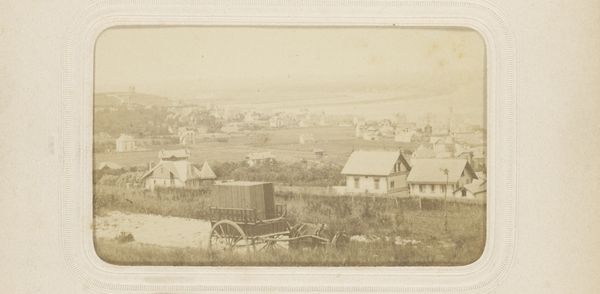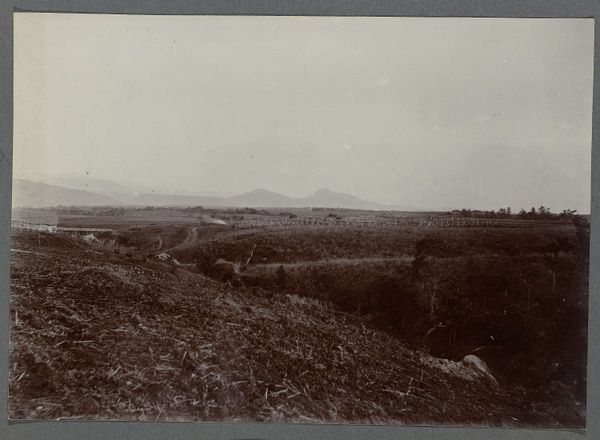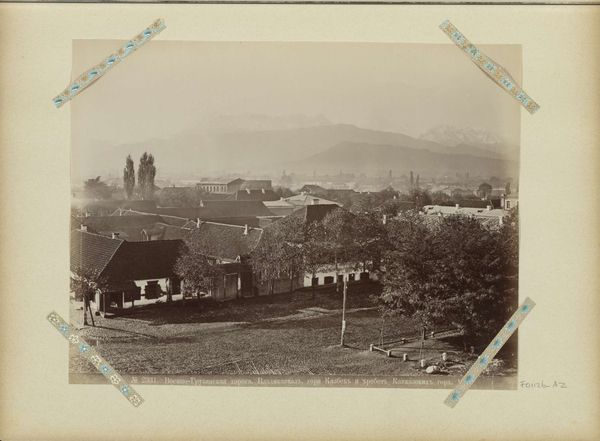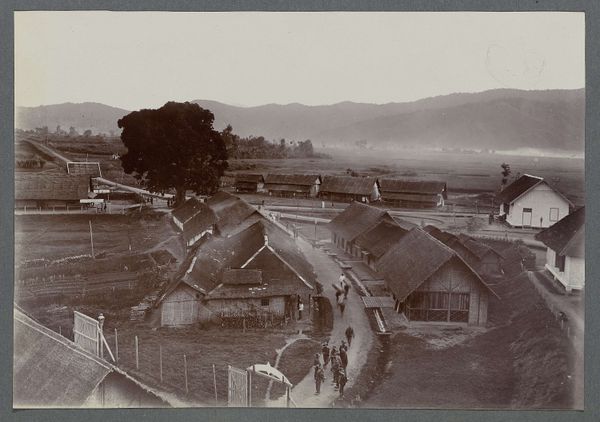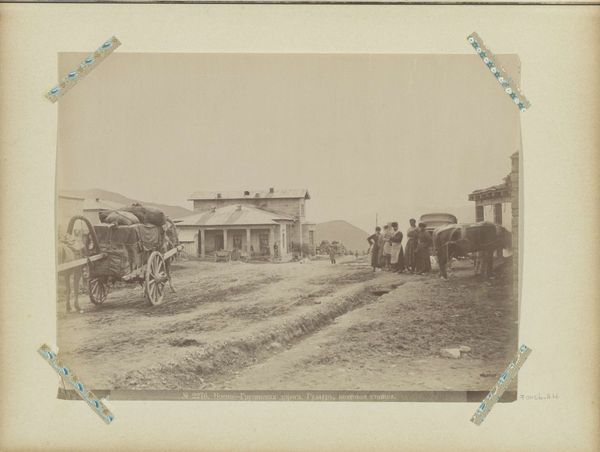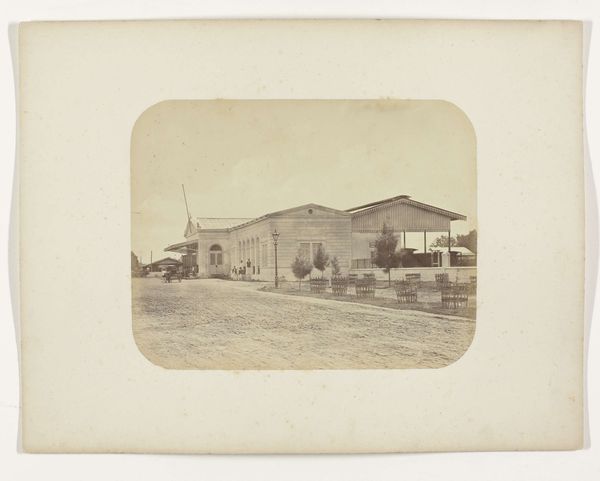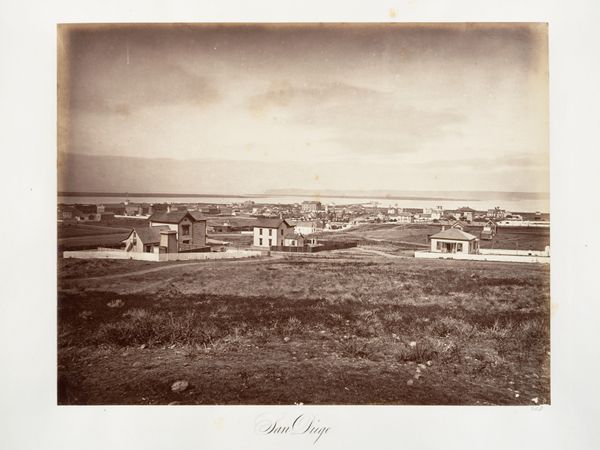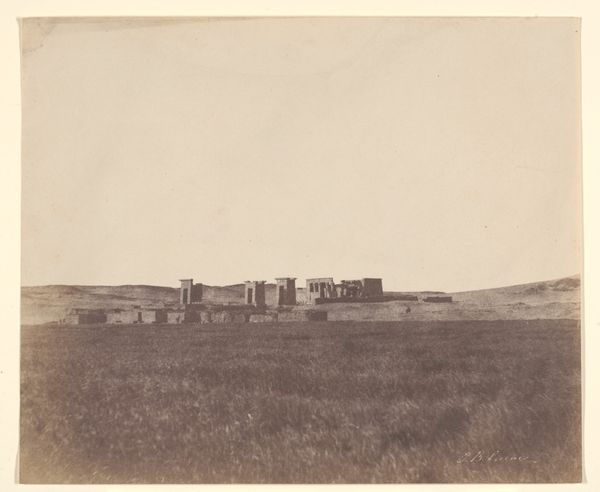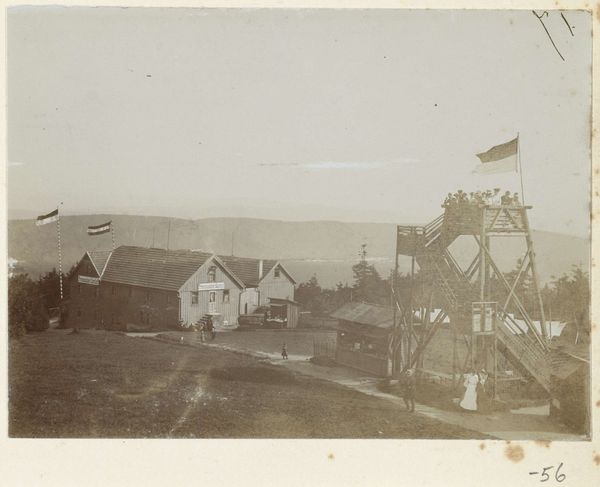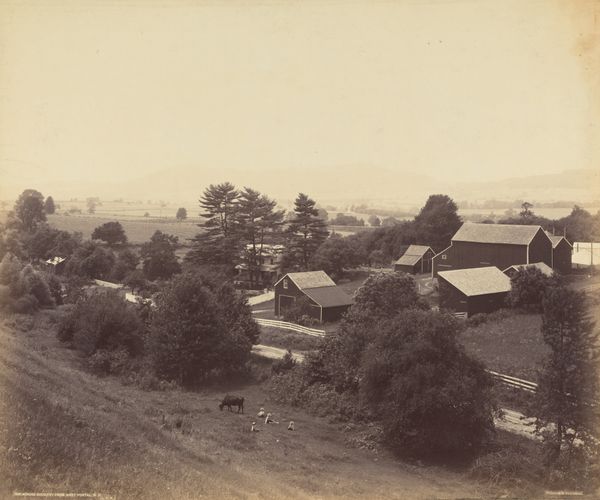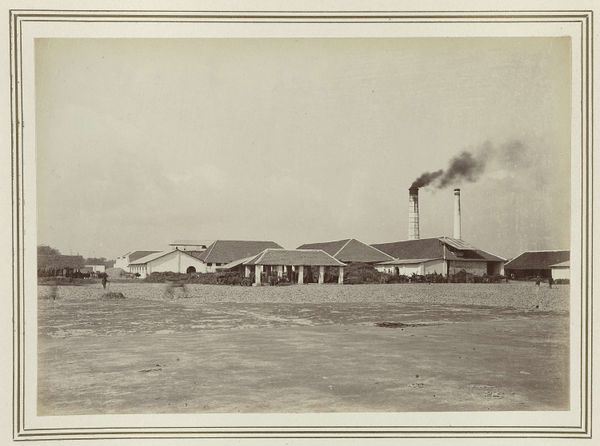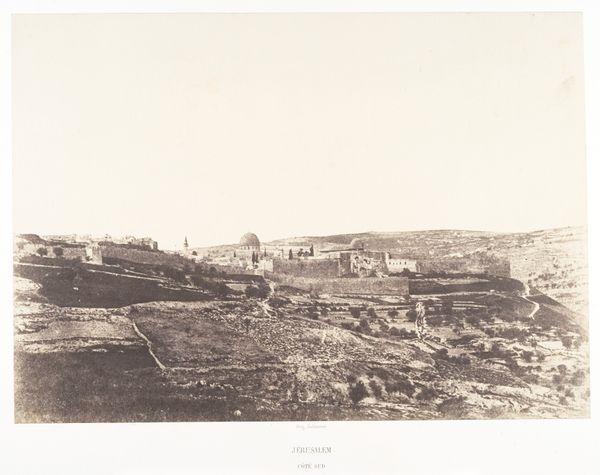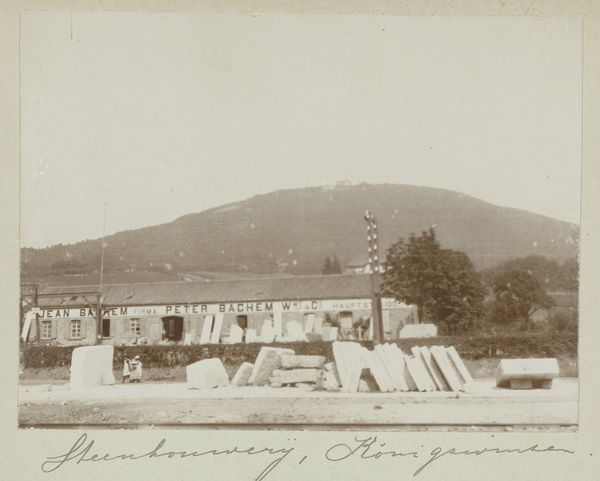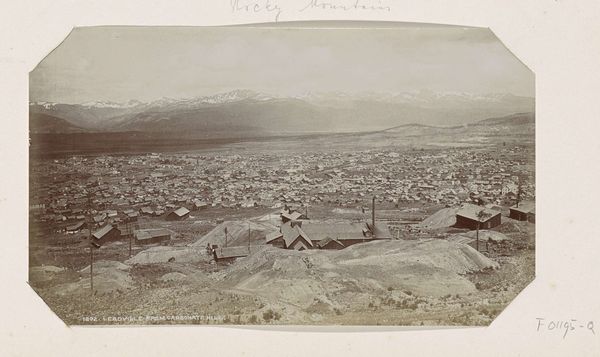
Gebouwen en schoorsteenpijpen van een smelterij in Noord-Amerika c. 1860 - 1900
0:00
0:00
Dimensions: height 108 mm, width 183 mm
Copyright: Rijks Museum: Open Domain
Editor: We're looking at a photograph, a gelatin silver print by William Henry Jackson, dating to somewhere between 1860 and 1900, titled "Buildings and Chimneys of a Smelter in North America." It depicts a sprawling industrial complex against a backdrop of mountains. The scale is pretty impressive, and a bit intimidating. What do you make of it? Curator: It's interesting how Jackson positions this industrial landscape. We often associate landscape photography of this era, particularly those influenced by the Hudson River School, with untouched nature. But here, he presents a very different version of the American landscape, one profoundly altered by industry. It’s a deliberate act, presenting viewers with the evolving role of industrial activities in defining America's public image. Do you notice how the factory almost mimics the shape of the mountains in the background? Editor: I do see that now. It's like he’s trying to say industrial progress is the natural evolution of the landscape, almost normalizing it. Is that the intention? Curator: Perhaps. Or it could be a commentary on the displacement of natural beauty, replacing the sublime with the productive. Jackson had a long and varied career, so considering the sociopolitical context of his work is important. How does the presence of a photographic image shape its reception, as compared to an idyllic painting? Editor: Because it’s photography, there's an implicit claim to objectivity, even if the framing is deliberate. A painter can romanticize or idealize the scene, but photography carries that initial association with truth and documentation. Curator: Exactly. That perceived "truth" allows the image to operate as a powerful document in shaping public opinion about progress, expansion, and even the environmental cost of industrialization. What do you think Jackson, as a photographer showing images to a large audience, felt was the public role of art at the time? Editor: I imagine there was a tension between celebrating American progress and also perhaps subtly acknowledging the cost of that progress. I’m seeing the image now less as a straightforward documentation, but as an early form of environmental commentary, or at least an instigator of societal questions. Curator: Precisely. It allows us to critically examine the politics of imagery and its lasting impact on our perception of the land and American identity.
Comments
No comments
Be the first to comment and join the conversation on the ultimate creative platform.
